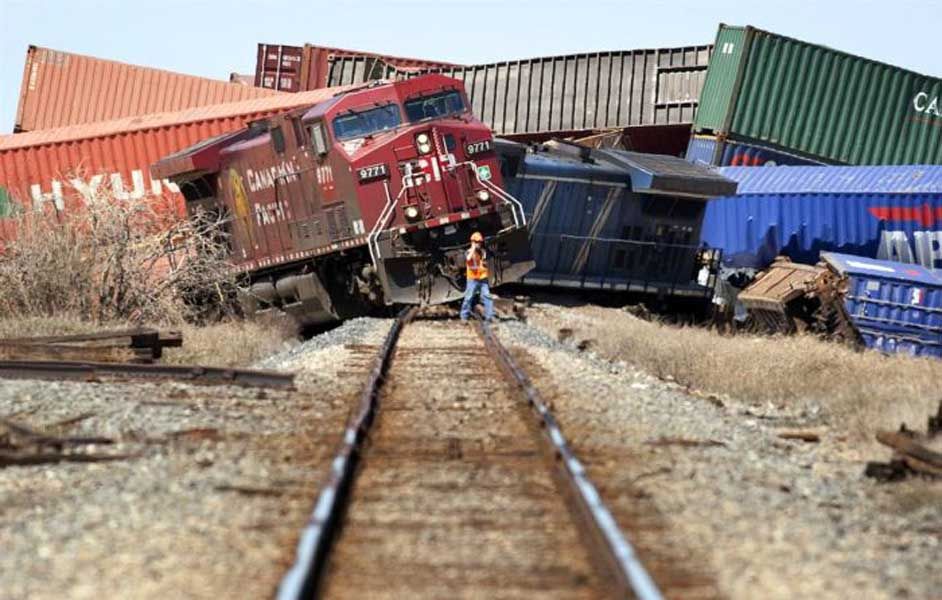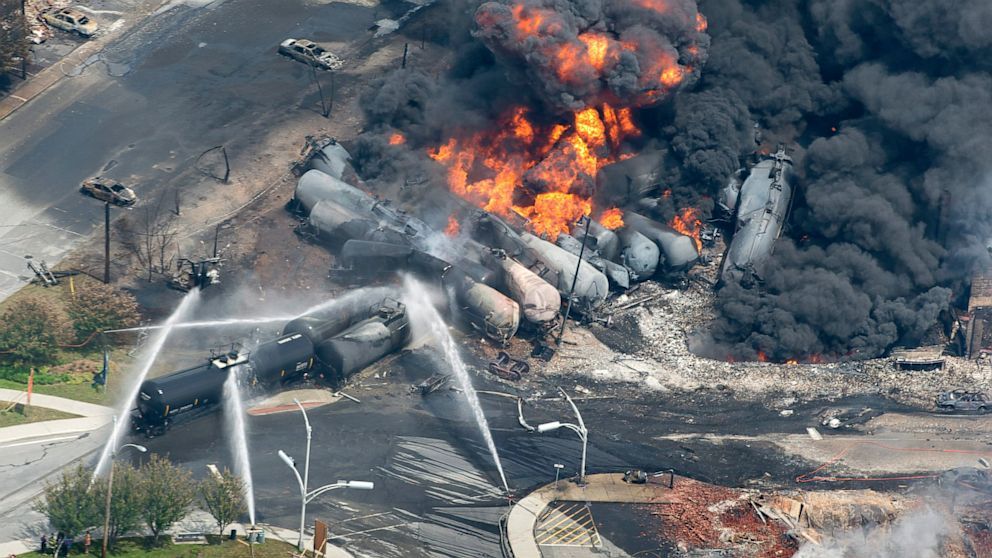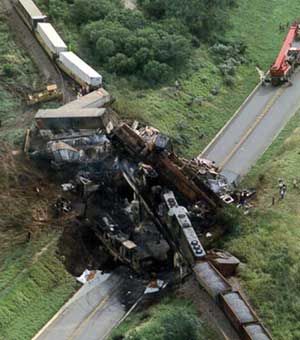When railcar wheelsets and couplers are thrown 100' distant, a crater in the earth, in all directions, and crumpled railcars are melted beyond all recognition, all that is left is a twisted mass of melted burnt out steel, and high-tech "CSI" accident investigators with all their calculators and high-tech accident simulators, they can safely conclude: "Yup, the whole shebang was going real fast, and derailed all over smitherines ... now we need a scapegoat to pin the whole mess on" ... "Quick, think up something that doesn't sound like a lie, something the press will believe".
The loco that had a small electrical fire, was put out with one small fire extinguisher, and no fuel or oil was ignited. Also the locos slid down the tracks, to some unknown location, mid-point on the grade, and decoupled far distant the actual electrical fire scene. This is Canada that surveyed the accident scene, and being RR private property, only accident investigators explicitly authorized by the RR would be allowed to examine the tracks, wreckage, and equipment. You know that they will undoubtedly fabricate as good a believable facsimile as they can, on the accident report.




